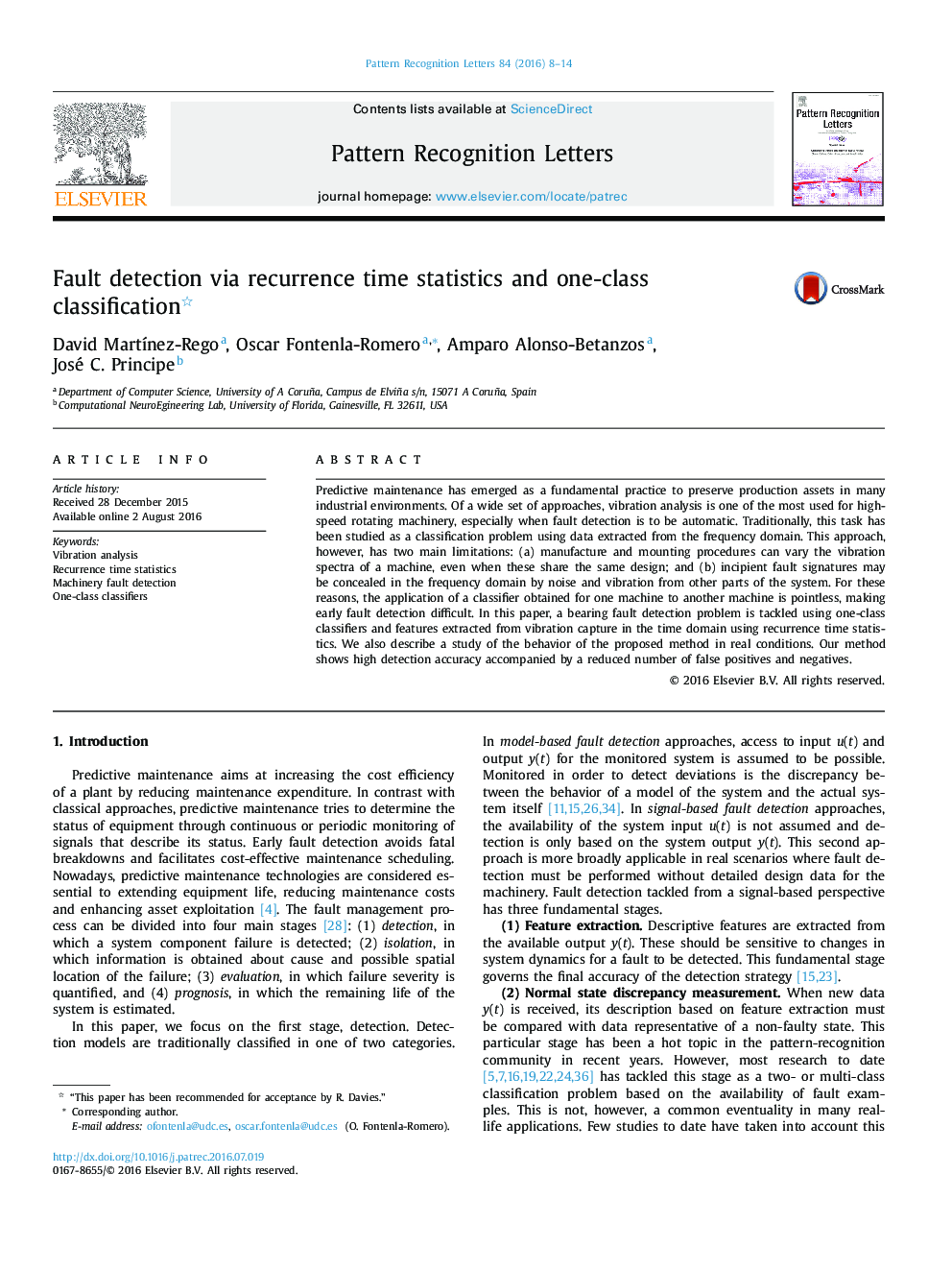| کد مقاله | کد نشریه | سال انتشار | مقاله انگلیسی | نسخه تمام متن |
|---|---|---|---|---|
| 534964 | 870309 | 2016 | 7 صفحه PDF | دانلود رایگان |
• A methodology for fault detection in rotating machinery is presented.
• An original one-class classifier based on extreme statistics (EVOC) is employed.
• One advantage of the method is a reduced number of hyperparameters to be adjusted.
• Another advantage is the use of only normal data of the machinery being monitored.
• The method shows higher classification accuracy than other state-of-the-art methods.
Predictive maintenance has emerged as a fundamental practice to preserve production assets in many industrial environments. Of a wide set of approaches, vibration analysis is one of the most used for high-speed rotating machinery, especially when fault detection is to be automatic. Traditionally, this task has been studied as a classification problem using data extracted from the frequency domain. This approach, however, has two main limitations: (a) manufacture and mounting procedures can vary the vibration spectra of a machine, even when these share the same design; and (b) incipient fault signatures may be concealed in the frequency domain by noise and vibration from other parts of the system. For these reasons, the application of a classifier obtained for one machine to another machine is pointless, making early fault detection difficult. In this paper, a bearing fault detection problem is tackled using one-class classifiers and features extracted from vibration capture in the time domain using recurrence time statistics. We also describe a study of the behavior of the proposed method in real conditions. Our method shows high detection accuracy accompanied by a reduced number of false positives and negatives.
Journal: Pattern Recognition Letters - Volume 84, 1 December 2016, Pages 8–14
